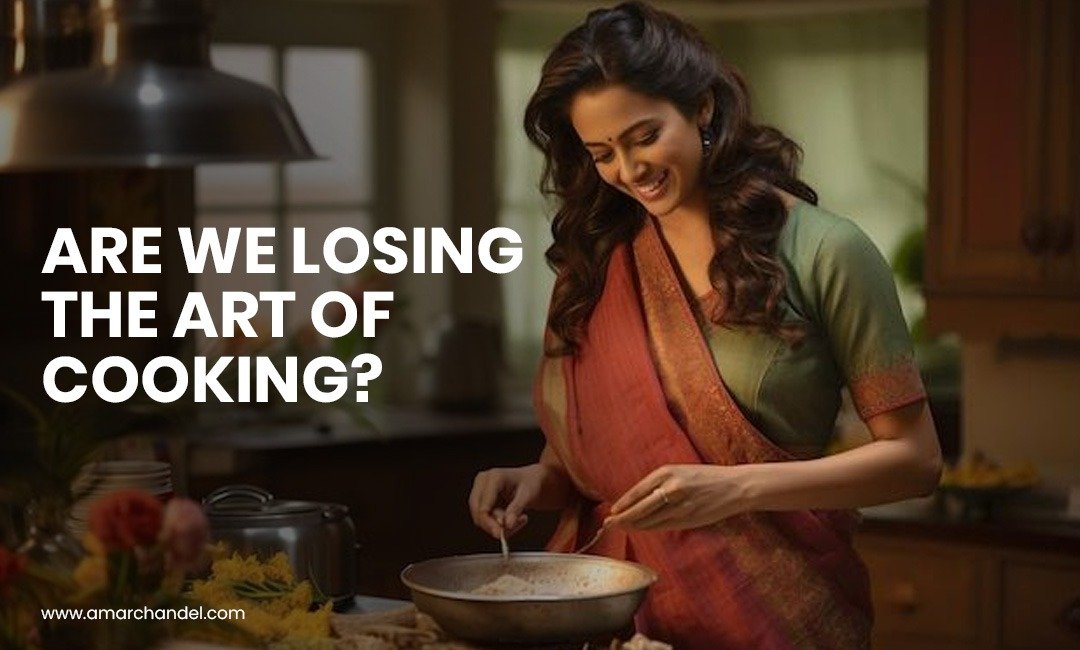In India, we once had a culture where food was treated not just as nourishment, but as a sacred offering. “अन्नं ब्रह्म” — food is divine — was not just a slogan but a lived philosophy. Meals were prepared at home, often from fresh, seasonal, plant-based ingredients, infused with love, herbs, and tradition. But in recent years, this relationship with food has shifted dramatically.
Just like the West, urban Indians are now increasingly turning to packaged, processed, and restaurant food. In metros like Delhi, Mumbai, Bengaluru, and Hyderabad, it is now common to see people eating breakfast in cabs, ordering lunch via apps, and ending their day with takeout pizza or biryani in plastic containers. A 2022 report by Euromonitor found that India’s packaged food market is expected to reach $70 billion by 2027, driven by fast-paced urban life, dual-income households, and the increasing popularity of convenience foods.
But this convenience comes at a cost — not just to our wallets, but to our waistlines and lifespans.
Studies consistently show that meals cooked at home are generally lower in saturated fat, salt, and sugar, and higher in fibre, vitamins, and antioxidants. In contrast, ultra-processed foods — including ready-to-eat meals, instant noodles, frozen snacks, and fast food — are now strongly linked to obesity, diabetes, heart disease, and even early death.
A 2023 study published in The Lancet Regional Health – Southeast Asia observed that high consumption of ultra-processed foods was associated with a 31% higher risk of mortality among Indian adults, especially when such foods replaced traditional home-cooked meals.
Yet, even when we eat “at home,” we may not be eating home-cooked food. Zomato’s 2024 annual report showed that almost 60% of daily orders are for dinner or late-night snacks — meals that were earlier lovingly cooked in Indian kitchens.
One of the lesser-discussed problems is that many young Indians — especially in urban settings — no longer know how to cook. According to a 2022 survey by LocalCircles, 44% of urban Indian youth aged 18–30 said they lacked basic cooking skills. This is not just a matter of convenience — it is a matter of public health.
As the American Medical Association lamented back in 1913, poorly cooked vegetables and mindless food preparation strip food of its vitality. Overcooked, oil-laden sabzis or packaged frozen rotis can hardly compare with the nourishing, balanced, home-prepared thalis our grandmothers served.
What Does the Science Say? Does Home Cooking Add Years to Life?
Yes — and now there’s research to back it up.
A landmark 10-year study from Taiwan published in Public Health Nutrition followed nearly 2,000 elderly individuals. It found that those who cooked their own food regularly had a 41% lower risk of death compared to those who relied on others for meals. Even after accounting for factors like exercise, dental health, and socioeconomic status, cooking remained a strong predictor of longevity.
The reason? People who cook at home tend to eat more vegetables, fewer processed items, and smaller portions. In short, they eat real food, not factory food.
In India, where rates of non-communicable diseases like diabetes, heart disease, and obesity are skyrocketing, such findings carry urgent implications. According to the Indian Council of Medical Research (ICMR), NCDs account for nearly 63% of all deaths in India, and diet is one of the top three modifiable risk factors.
Why Men Must Learn to Cook
One interesting detail from the Taiwanese study was that the longevity benefit was much stronger in women than in men. Why? Researchers speculated that many men equated “cooking” with just reheating packaged food or making instant noodles, while women actually prepared balanced meals. This echoes a concern closer home: In India, cooking is still considered “women’s work,” and men rarely participate, except occasionally during outdoor barbecues or experiments with YouTube recipes.
This mindset needs urgent change. Cooking is not gendered — it is a survival skill and a gateway to better health. In fact, some of the most impactful public health movements in India — such as the Poshan Abhiyan — now emphasise male involvement in food preparation, especially to improve family nutrition and child health.
The Food Industry Is Not Your Well-Wisher
A powerful editorial in The Hindu once observed that we have outsourced our food to corporations that care about profit, not health. This is true globally — and increasingly true in India. From pesticide-laden fruits to fried snacks with trans fats, to ultra-processed “healthy” biscuits with added sugar — the food industry is not your dietician, nor your caregiver.
The trust we place in ready-to-eat, packaged, and fast food brands is costing us our health — silently but surely.
As Dr. Michael Pollan famously said, “The more we let corporations cook for us, the fatter we get.” This is not cynicism — it is epidemiology.

Reviving the Kitchen: A Revolution for Health
Returning to home-cooked, plant-forward, traditional Indian meals may be our greatest weapon against the epidemic of lifestyle diseases. Simple, time-tested combinations like dal-roti, khichdi, idli-sambar, rajma-chawal, and sabzi-daliya are inherently balanced and wholesome. Spices like turmeric, cumin, coriander, ginger, and garlic are now being validated by modern research for their anti-inflammatory and gut-healing properties.
Even simple steps like cooking more vegetables, reducing deep-frying, avoiding reheating oils, and cutting out ultra-processed snacks can dramatically improve your health.
In an era dominated by food apps and influencer recipes, we need a cultural revival of the Indian kitchen as a sacred, healing space — not a chore to be outsourced. Cooking with our own hands connects us to our food, makes us more mindful of what we consume, and in the long run, could be the difference between lifelong vitality and chronic illness.
In Conclusion
India’s kitchens must roar back to life — not just with the sound of the pressure cooker whistle or tadka in mustard oil — but with awareness, pride, and purpose.
Home cooking is no longer just tradition — it is modern-day medicine.
References
• ICMR-NCDIR. “India: Health of the Nation’s States.” 2023.
• Euromonitor International. “India Packaged Food Market Forecast.” 2022.
• Lo YT, Wahlqvist ML, Chang YH, Lee MS. “Cooking frequency may enhance survival in Taiwanese elderly.” Public Health Nutr. 2012.
• Monteiro CA, Moubarac JC, Cannon G, Ng SW, Popkin B. “Ultra-processed products are becoming dominant in the global food system.” Obes Rev. 2013.
• The Hindu. “Is the Food Industry Failing India?” Editorial, Jan 2024.


Give a Reply